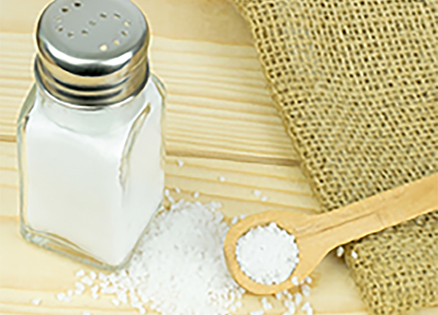Alternate Foods Rich in Iodine to Replace Table Salt as You Lower Blood Pressure

One of the first dietary steps you can take to lower blood pressure is to cut back on salt. Salt contains sodium. By decreasing your salt intake, you decrease the level of sodium in your bloodstream allowing your kidneys to more effectively eliminate water resulting in a lower blood pressure.
However, salt is one of our main dietary sources of iodine. Iodine deficiency is not a common problem due to the fact iodine is added to table salt.
If you eliminate table salt from your diet you may need to shift your diet to include other sources of iodine.
What role does iodine play in your health?
Iodine’s main function is to support the development and function of the thyroid gland with hormone production.
Iodine also fights bacteria, promotes healthy breast tissue, supports hair and skin growth, protects against toxic effects of radioactive material, and is involved in energy production and nerve function.
What are iodine deficiency symptoms?
Some deficiency symptoms include:
• Depression
• Dry eyes
• Decreased mental capacity
• Fatigue
• Cold extremities
• Goiter
• Hypothyroidism
• Insomnia
• Weight gain
How much iodine do you need in your diet daily?
Recommended daily intake is 150 micrograms (mcg) for adults and 220 mcg daily for pregnant women.
What are some foods rich in iodine?
One teaspoon of iodized salt contains approximately 400 mcg iodine. If you are working to reduce your salt intake, here are some additional dietary sources of iodine.
These sources are listed in descending order in regards to iodine content per 100 grams. For meat including beef, pork, poultry and seafood 100 grams is equal to about 3.5 ounces. For a visual, 3 ounces is about the size of a deck of cards.
Clams 90 mcg
Shrimp 65 mcg
Haddock 62 mcg
Oysters 50 mcg
Salmon 50 mcg
Halibut 46 mcg
Canned sardines 37 mcg (100 grams = about 1 cup)
Beef liver 19 mcg
Pineapple 16 mcg (100 grams = about ½ cup)
Canned tuna 16 mcg (100 grams = about ½ cup)
Eggs 14 mcg (100 grams = two eggs)
Peanuts 11 mcg (100 grams = about ¾ cup)
Whole wheat bread 11 mcg (100 grams = about 2 slices)
Cheddar Cheese 11 mcg (100 grams = about 3.5 ounces)
Pork 10 mcg
Lettuce 10 mcg (100 grams = about 1 ¼ cups)
Please note sea salt is not a rich source of iodine.
For further guidance on steps to lower blood pressure, access the free ecourse 7 Natural Ways to Lower Blood Pressure at http://lowerbloodpressurewithlisa.com.
All the best,
Lisa Nelson RD
Health Pro for HealthCentral
Image courtesy of Mister GC / FreeDigitalPhotos.net



